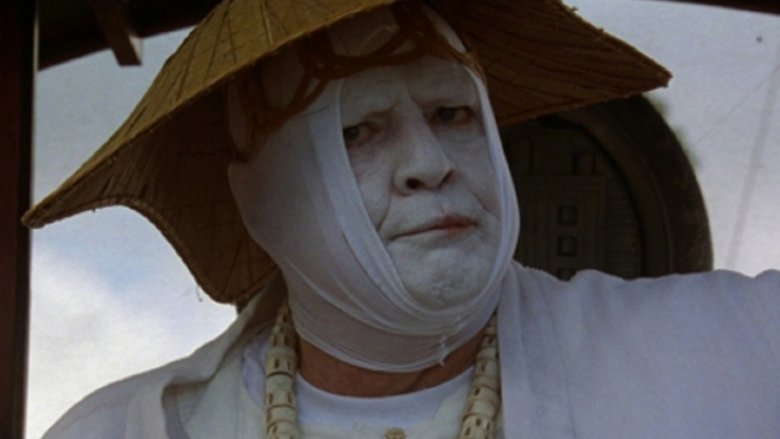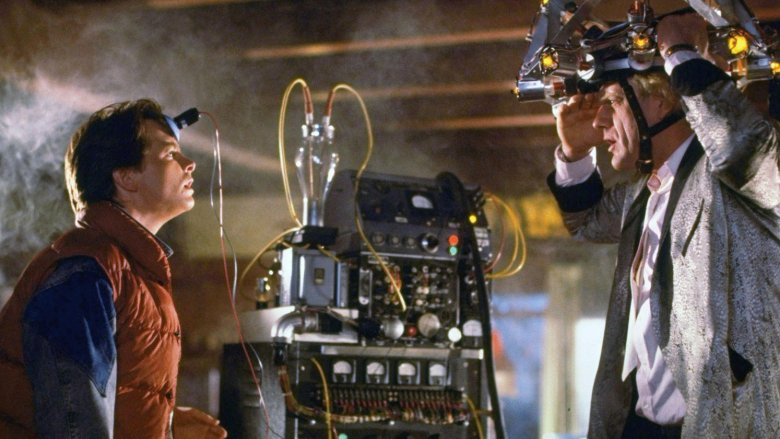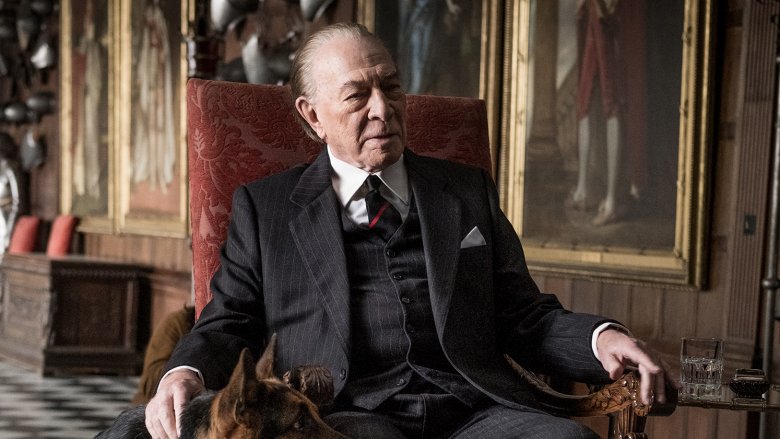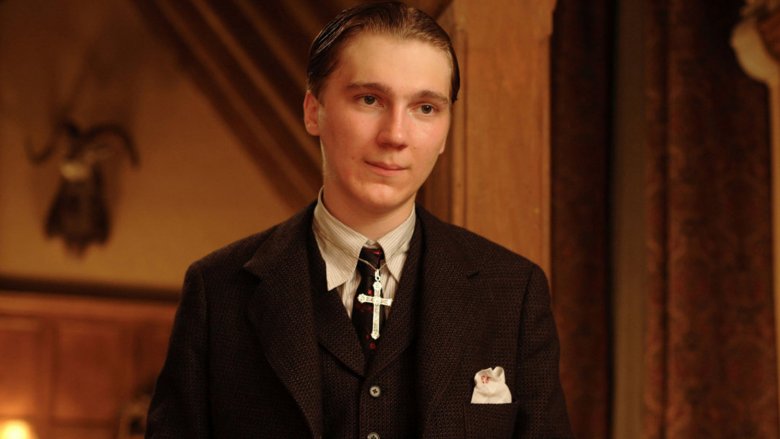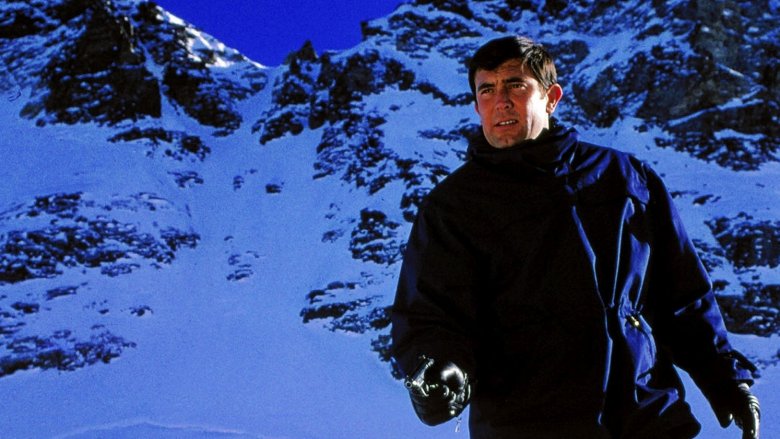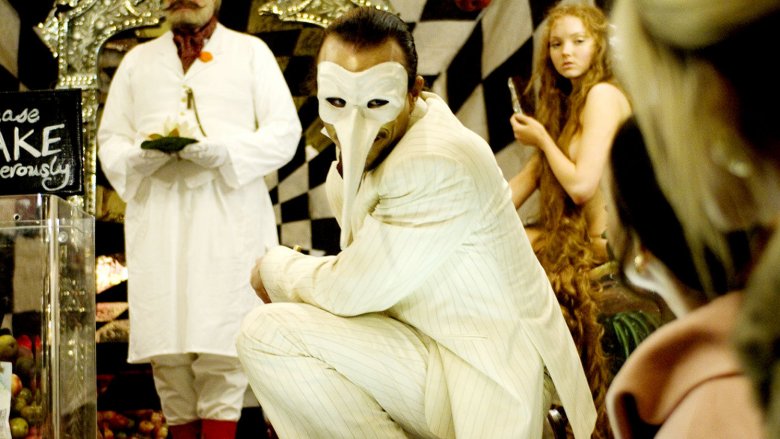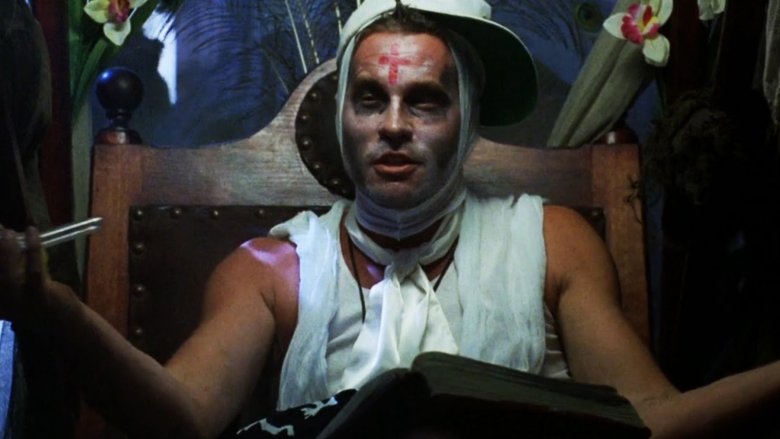Movie Recastings That Cost Studios A Ton Of Money
When a major role in Hollywood must suddenly be recast in the middle of production, the costs of replacing that person can make a budget skyrocket and send a movie off the rails. This can also be true when a beloved actor is replaced in between films of a popular franchise.
Budgeting in Hollywood is a tricky thing even under the best circumstances, and studios can lose a lot of money because of recasting. In a few notable cases, recasting a role has ended up costing movie studios millions of dollars. Besides the replacement actor's wages, there are also costs of production, re-shoots, scrapped footage, and marketing to consider. Let's take a look at some of the actor replacements that ended up costing movie studios the most.
Back To The Future - Eric Stoltz
Back to the Future director Robert Zemeckis and his co-writer Bob Gale had originally wanted Michael J. Fox for the role of Marty McFly, but the young, up-and-coming actor was unavailable due to his commitment to the hit TV sitcom Family Ties. As a result, the pair bowed to pressure from Universal head Sid Sheinberg to cast Eric Stoltz as their leading man instead. Sheinberg was so convinced that Stoltz was the right guy, he even told Zemeckis that the studio would foot the bill for reshoots with a different actor if things didn't work out. Production got underway, and they filmed with Stoltz for five weeks. It soon became apparent that he just wasn't a good fit for the part. Zemeckis had to let Stoltz go, saying the sit-down with the actor was "the hardest meeting I've ever had in my life" and adding "I broke his heart."
They recast Marty with Fox, who spent the next several months working on both Back to the Future and Family Ties — sometimes working up to 20 hours a day on the two productions.
The production ended up having to recast Marty's girlfriend Jennifer too. Melora Hardin was originally cast as Jennifer, but the Universal execs worried the 5'7" tall actress would tower over Fox, who stood at only 5'4". The slightly more diminutive Claudia Wells took her place. Between the recastings, reshoots and scrapped footage of Stoltz, the McFly switcheroo ended up costing the studio an extra $4 million in production costs.
All the Money in the World - Kevin Spacey
In November 2017, shocking sexual assault allegations against actor Kevin Spacey made headlines around the world. For director Ridley Scott, the troubling news presented a huge problem: Spacey starred in Scott's new film All the Money in the World — set to premiere on December 22. The director leapt into action, going into "battle mode" in order to save his movie.
Within 24 hours, Scott had re-secured the locations used in Spacey's scenes, got the rest of the cast on board, and recast Spacey with Christopher Plummer — Scott's original choice to play industrialist J. Paul Getty. For Scott, the next few weeks were "the most desperately difficult thing I've ever done in my life." His team rushed to reshoot all of Spacey's scenes in time for the Christmas release. Originally budgeted at $40 million, the rush reshoots and post-production reportedly added more than $10 million to the film's budget.
All the Money in the World wasn't the only production affected by the allegations against Spacey. Netflix took a huge hit as well, postponing production on their hit series House of Cards and firing Spacey from the show's final season. The streaming service also scrapped an upcoming Gore Vidal biopic that Spacey produced and starred in, which was already filmed and in post-production. All together, the decision to cut ties with Spacey ended up costing Netflix some $39 million in the final quarter of 2017.
There Will Be Blood - Kel O'Neill
Director Paul Thomas Anderson's 2007 masterpiece There Will Be Blood earned critical acclaim after its release, but production on the film didn't go smoothly at first. Originally, Kel O'Neill had been cast to play pastor Eli Sunday, opposite Daniel Day-Lewis as prospector Daniel Plainview. However, it soon became clear that things weren't working out after principal filming began on a remote West Texas ranch. While some rumors suggested O'Neill was unnerved by Day-Lewis' intense method acting, both actors have refuted that claim. According to O'Neill, he simply had difficulties developing a good working relationship with the director — which led directly to O'Neill's firing just a few weeks later.
To replace O'Neill, Anderson turned to Paul Dano, who had originally been cast in the smaller role of Eli's brother Paul. For the rest of the movie's production, Dano did double duty as the Sunday brothers — including three weeks of reshoots to replace the scenes shot with O'Neill and Day-Lewis. On a film with an already tight budget, weeks of scrapped footage and reshoots can make a big dent in the potential profits at the box office. The decision to recast O'Neill may have hurt There Will Be Blood's bottom line, but it paid off in the end: The film earned multiple accolades, including eight Oscar nominations and two wins.
The Matrix Reloaded - Aaliyah
In March 2001, filming began on The Matrix Reloaded and The Matrix Revolutions — with both movies shooting concurrently to save time and production costs. However, the sudden and tragic death of one of the new Matrix stars threatened to derail the Wachowskis' carefully planned production timeline. In Reloaded, audiences get their first in-depth look at the underground city of Zion and the people who live there. Among them is Zee, wife of Link and sister to Dozer and Tank. Originally, Zee was played by up-and-coming actress/singer Aaliyah, who had recently starred in the action film Romeo Must Die. Sadly, Aaliyah died on August 25, 2001, when the twin-engine plane she was on crashed during takeoff in the Bahamas.
Aaliyah was replaced by Marvin Gaye's daughter, Nona Gaye, and reshoots began immediately. Although Aaliyah had not completed filming her part as Zee, several weeks of footage from her Reloaded scenes were already in the can and had to be scrapped entirely. Among the footage was a massive underground dance party scene in the caverns below Zion — undoubtedly an expensive reshoot given the complicated setup and large number of extras required. Although none of Aaliyah's footage made it into the final film, you can watch some behind-the-scenes footage of her on the Reloaded set in this tribute video from the DVD release.
On Her Majesty's Secret Service - Sean Connery
While 1969's On Her Majesty's Secret Service is considered one of the better James Bond films today, the decision to replace legendary Bond star Sean Connery with George Lazenby nearly derailed the entire franchise. However, this recasting didn't happen in the middle of production or involve a single reshoot. While filming 1967's You Only Live Twice, Connery announced his intention to retire from the role — sending Albert "Cubby" Broccoli scrambling to find his next James Bond. At the time, Roger Moore was unavailable due to a commitment to his TV series The Saint. Broccoli eventually picked unknown actor/model George Lazenby for Bond in On Her Majesty's Secret Service.
While the film did turn a profit, the departure of Connery had an obvious impact on ticket sales. On Her Majesty's Secret Service made only $22 million in the U.S. — about half of what You Only Live Twice had brought in with Connery just two years before. Initial reviews were mixed at best, with many critics panning Lazenby's performance or even lampooning him as "The Big Fry" for his former role as a Fry's Chocolate spokesperson. Lazenby refused to return for another Bond film, and United Artists ended up begging Connery to return for Diamonds Are Forever — giving him a record-setting £1.25 million salary. Connery quit again afterwards, but he saved the franchise: Diamonds Are Forever made $116 million worldwide.
The Imaginarium of Doctor Parnassus - Heath Ledger
After the sudden and untimely death of 28-year-old Heath Ledger in January 2008, director Terry Gilliam faced a major dilemma: He was halfway through filming on The Imaginarium of Doctor Parnassus, in which Ledger had starred. Gilliam was forced to shut down production while he tried to find the best course forward. Eventually, the director hit upon the idea of casting some of Ledger's closest actor friends — Jude Law, Johnny Depp, and Colin Farrell — as alternate versions of Ledger's character, Tony. He rewrote the script so that Tony would change appearance as he travels through magical realms. This allowed Gilliam to keep most of Ledger's completed footage in the movie as the "real world" Tony.
With a reworked plot and the new "Tonys" on board, production on Imaginarium got back on track, but the changes and an insurance claim after Ledger's death ended up adding about $5 million dollars to the budget. To their credit, none of the three actors called upon to replace Ledger wanted to make a profit from his death: Depp, Law, and Farrell all ended up donating their wages from the film as a legacy to benefit Ledger's young daughter.
Island of Dr. Moreau - Half the cast (and the director)
In the years since its release, the 1996 film The Island of Dr. Moreau has become known as one of the most troubled productions in Hollywood history. The chaos on the set of Dr. Moreau is the subject of a 2014 documentary, which explains the complicated tale of firings, recastings, and character shuffles.
Dr. Moreau started out in the hands of a director, Richard Stanley, who had long dreamed of bringing the classic book to life. His dream soon turned into a nightmare. Originally, Bruce Willis was cast as U.N. agent Edward Douglas, with James Woods as Moreau's assistant, Montgomery. Willis dropped out early and was replaced by Val Kilmer. When Kilmer demanded changes to the schedule, Stanley gave him the role of Montgomery instead — forcing James Woods out. Rob Morrow was cast as Douglas, but Kilmer's bad attitude, and the tension on the set, caused Morrow to quit on the second day of shooting.
New Line fired Stanley as director the very next day, bringing in legend John Frankenheimer as his replacement. Actress Fairuza Balk nearly quit in protest, and David Thewlis was brought in to replace Morrow. Six weeks of filming ended up taking six months, ballooning the budget to $40 million. In the end, all that suffering by the cast and crew wasn't even worth it. The Island of Dr. Moreau was panned by critics and flopped at the box office, only bringing in $27 million domestically.
